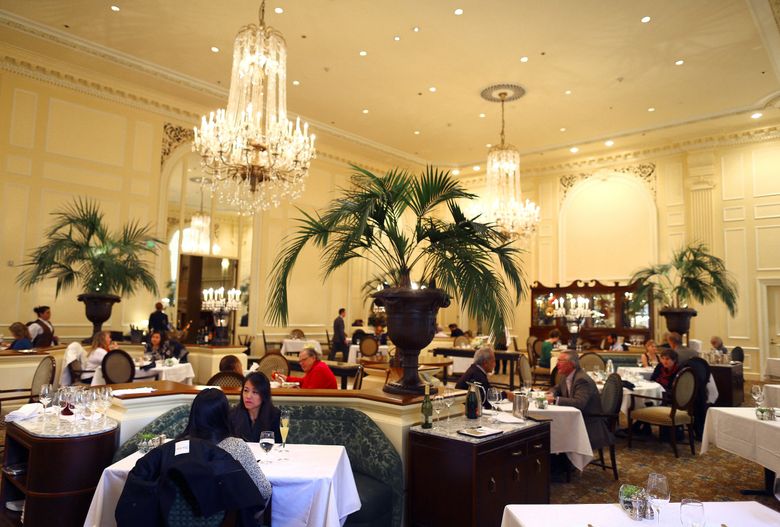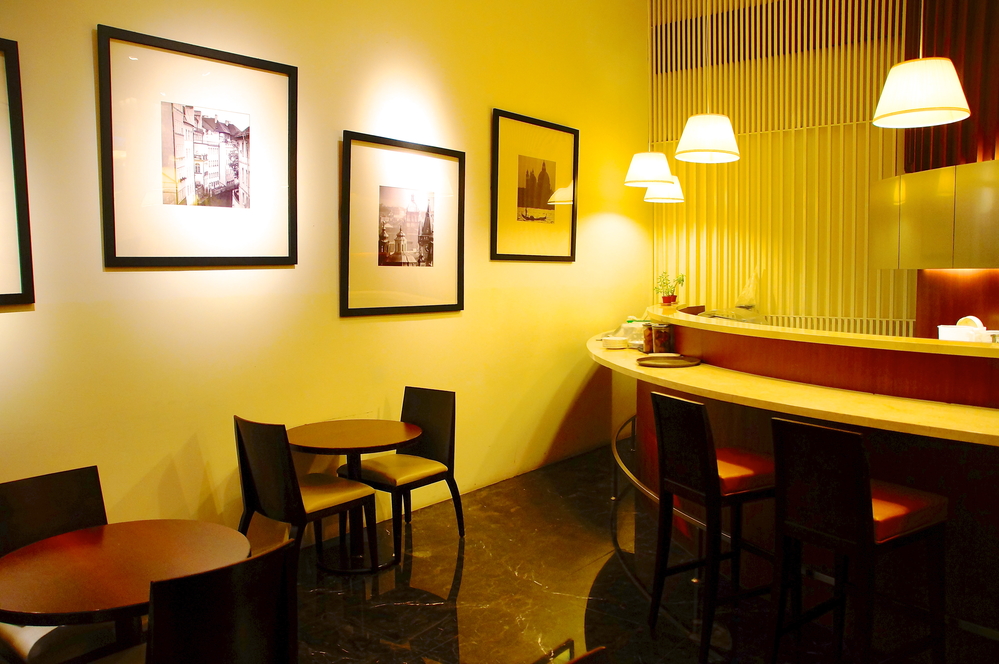Pan Asian Restaurant Islamabad: Discover Exquisite Asian Cuisine
Pan Asian Restaurant Islamabad: Discover Exquisite Asian Cuisine
Blog Article
Savor Authentic Eastern Food With a Pan-Asian Twist for a Culinary Journey
Beginning on a culinary journey via authentic Eastern cuisine, improved with a Pan-Asian twist, uses an one-of-a-kind opportunity to discover the rich tapestry of tastes that specify the region's varied cooking customs. As you consider these enticing meals, consider the cultural narratives and historic influences that form them, each bite offering a story waiting to be found. asian fusion restaurant.

Discovering Pan-Asian Tastes
In the realm of worldwide gastronomy, Pan-Asian cuisine attracts attention for its remarkable diversity and the unified interplay of flavors from various Oriental cultures. This cooking approach celebrates the rich practices and distinct active ingredients located across the continent, creating a tapestry of tastes that is both appealing and rewarding. Key to Pan-Asian food is its capacity to stabilize contrasting tastes-- pleasant, salted, spicy, and sour-- while highlighting the quality and high quality of each active ingredient.
From the umami-rich soy sauce of Japan to the fiery chili peppers of Thailand, Pan-Asian food uses a comprehensive combination of flavors. These components are typically incorporated in inventive ways, improving dishes with layers of intricacy. For circumstances, the use of fragrant natural herbs such as lemongrass and cilantro, usual in Vietnamese and Thai food, adds a refreshing brightness to recipes, while the unification of coconut milk delivers a luscious, rich texture.
The focus on fresh produce and fragrant seasonings makes certain that each meal is not just a banquet for the taste buds yet additionally for the detects. Pan-Asian food invites diners to start a culinary trip, checking out the large and varied landscapes of Asian gastronomy with every bite.
Fusion Recipes to Attempt
While Pan-Asian food is commemorated for its conventional flavors, the contemporary culinary landscape is significantly embracing fusion meals that blend these classic aspects with influences from other regions. This cutting-edge technique not just honors the rich heritage of Eastern cookeries however likewise introduces novel preference experiences that appeal to contemporary tastes.
A prime example of such a blend recipe is the Korean-Mexican taco, where seasoned bulgogi beef is covered in a warm tortilla, topped with kimchi and a spicy gochujang-infused salsa. This combination marries the bold, mouthwatering flavors of Korea with the lively, fresh components of Mexican cuisine. Likewise, sushi burritos have actually gained popularity, amalgamating the delicate creativity of Japanese sushi with the passionate, hand-held convenience of a burrito, typically including blend components like tempura shrimp and avocado with a drizzle of wasabi mayo.
One more noteworthy dish is Thai curry ramen, which instills the creamy, fragrant flavors of Thai curry into the reassuring broth of standard Japanese ramen, developing an unified blend that entices the detects. These fusion recipes extend beyond plain novelty; they stand for a cooking discussion between societies, urging expedition and technology in the globe of Pan-Asian food.
Vital Components and Flavors
To really value Pan-Asian food, one have to comprehend the necessary ingredients and spices that create its structure. This diverse cooking design draws from a rich tapestry of Oriental practices, using an unified mix of tastes and structures.
Aromatic aspects are essential, with lemongrass, garlic, and ginger being common throughout various Pan-Asian dishes. These ingredients give a fragrant base that improves the complexity of tastes. Flavors such as celebrity anise, cardamom, and cinnamon present warmth and character, resembling impacts from regions like China and India.

Food Preparation Techniques and Tips
Mastering the art of Pan-Asian cuisine requires experience with its distinct food preparation techniques, each adding to the lively tapestry of tastes this cooking tradition is celebrated for. Central to these methods is the stir-fry, a rapid cooking method that preserves the nutritional stability and brilliant shades of components. Making use of a frying pan, the stir-fry approach enables also warmth circulation, essential for attaining the characteristic appearance and flavor balance of Pan-Asian recipes.
One more fundamental technique is steaming, specifically widespread in Chinese cuisine. This gentle method maintains the all-natural flavors and nutrients of ingredients, making it excellent for seafood and veggies. Dumplings, a cherished staple, usually gain from steaming, leading to soft, succulent textures.
Grilling, also indispensable, imparts great smoky midsts to dishes such as Oriental bulgogi or Japanese yakitori (pan asian dining Islamabad). This strategy often entails marinading ingredients, enabling flavors to penetrate deeply prior to food preparation over an open flame or warm plate
Lastly, grasping the art of stabilizing flavors-- sweet, sour, salted, bitter, and umami-- is important. Correctly layering these components can raise a recipe from normal to remarkable, supplying a facility and satisfying cooking experience that check it out personifies the essence of Pan-Asian food.
Dining Experiences Worldwide
Around the world, Pan-Asian cuisine uses an unequaled dining experience, commemorated for its rich tapestry of tastes and vibrant discussions. This culinary phenomenon has transcended social limits, catching the hearts and palates of food lovers worldwide. In cosmopolitan cities like New York, London, and Sydney, Pan-Asian restaurants serve as fusions where cooking traditions from Thailand, Japan, China, and beyond merge, providing restaurants with a diverse published here mix of recipes that highlight the region's variety.
The international allure of Pan-Asian food exists in its capacity to supply both authenticity and development. Cooks skillfully wed traditional components such as lemongrass, soy sauce, and miso with modern strategies, causing meals that are both acquainted and refreshingly brand-new. This fusion allows diners to start a culinary trip that values heritage while welcoming modernity.
In addition, eating experiences are elevated via attentively developed settings that show the ethos of Pan-Asian visual appeals. From minimalist Japanese-inspired insides to vivid Thai-themed rooms, each dining establishment uses a distinct ambiance that enhances the cooking offerings. Therefore, customers are not just taking in a meal however partaking in a social experience, making Pan-Asian eating a genuinely worldwide phenomenon.
Final Thought
The exploration of Pan-Asian food uses an extensive understanding of the complex interplay of tastes and cooking practices across Asia. By embracing combination recipes such as Thai curry ramen and sushi burritos, the culinary trip not just highlights the flexibility of typical components yet additionally showcases ingenious modern-day methods. This gastronomic adventure, enhanced by vital spices and cooking approaches, offers an unique chance to appreciate the social diversity and culinary virtuosity that define Pan-Asian food on an international scale.
Beginning on a cooking journey with genuine Eastern cuisine, boosted with a Pan-Asian spin, uses an one-of-a-kind chance to explore the rich tapestry of tastes that specify the area's varied culinary traditions.In the world of international gastronomy, Pan-Asian cuisine stands out for its amazing diversity and the harmonious interaction of tastes from different Eastern cultures. Key to Pan-Asian cuisine is its capacity to balance contrasting tastes-- sweet, salty, spicy, and sour-- while highlighting the quality and high quality of each component.

Report this page